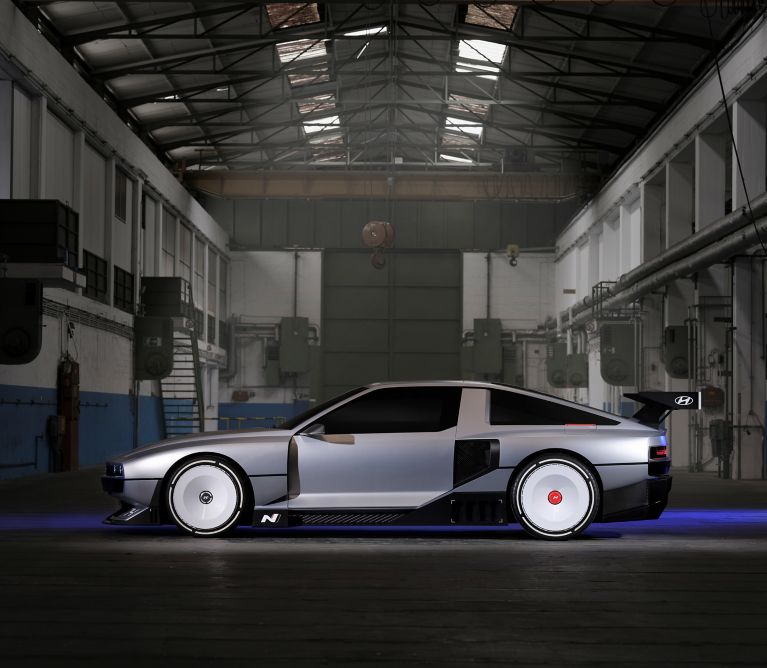- From Pony Coupe Concept to N Vision 74: how Hyundai’s futuristic rolling lab was inspired by its heritage
- Hyundai’s designers uncovered full technical data of one of the most impactful design studies of the 1970s and 1980s
- N Vision 74 represents Hyundai N’s sustainable high-performance vision beyond battery-electric cars, delivering enhanced driving fun with zero emissions
Hyundai Motor recently unveiled N Vision 74, a high-performance hydrogen fuel cell hybrid rolling lab that takes design cues from its heritage. The futuristic look of N Vision 74 is the next step for Hyundai’s N Brand, underscoring the company’s progressive spirit.
Hyundai’s designers developed award-winning N Vision 74 as an homage to its Hyundai Pony Coupe concept from 1974. This eye-catching model, which featured styling by the legendary Italian automotive designer Giorgetto Giugiaro, wowed audiences when it was presented at the Turin Motor Show that year. Hyundai recently announced it is to collaborate with Giugiaro to bring back the car that kickstarted the Korean automotive industry as a celebration of the company’s brand heritage. Italian design firm GFG Style, founded by father and son founders Giorgetto and Fabrizio Giugiaro, will rebuild the original Pony Coupe concept.
When Hyundai’s designers began working on N Vision 74, they ventured to the company’s Design Center archives in Korea to examine historical documents and blueprints associated with the Pony Coupe concept. However, while dusting off timeworn sketches and plans, they made a fascinating discovery that challenged their own perception of the brand’s design history.
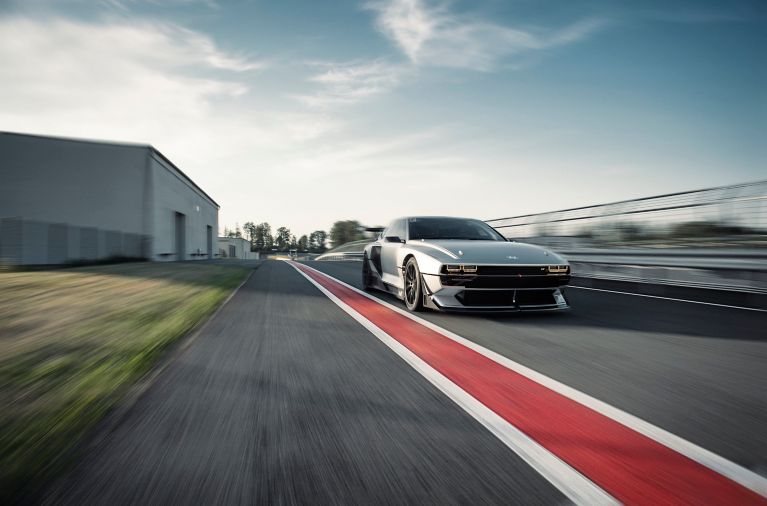
Envisioning the future of N: N Vision 74
An ambitious and audacious attitude from the very beginning
Hyundai’s heritage is a renowned story that depicts the pioneering philosophy and bold ambition of its founder, Chung Ju-yung, whose unwavering attitude and spirit still characterise the company to this day.
Born in 1915, Chung always dreamed of owning a car company. However, in the first half of the 20th century, Korea had very few paved roads, which are essential for automotive transport. From 1940 to 1943, he ran an automotive repair shop. In 1946, Chung created the first business entity to bear the Hyundai name, Hyundai Auto Repair. The following year, he established a construction business, Hyundai Engineering and Construction Company.
Hyundai Engineering and Construction Company won key government construction contracts, becoming responsible for building much Korea’s transportation infrastructure during the country’s rapid industrialisation in the 1960s. This included the Kyeong-bu expressway, among other important structures.
With crucial transportation infrastructure in place, Chung was finally able to realise his life-long ambition of becoming the owner of a car company, when he founded Hyundai Motor Company in 1967. The following year, the construction of the company’s Ulsan assembly plant was completed. Today, it is one of the world’s largest integrated automobile manufacturing facility, with an annual production capacity of 1.5 million units.
The development of Pony, Hyundai’s first mass-produced model
Initially, Hyundai developed vehicles in cooperation with other automotive manufacturers. By the mid-1970s, the company decided to produce its first-ever model and Korea’s first mass-produced car, the Hyundai Pony.
To spearhead this entry into the automotive sphere, Hyundai hired George Turnbull, the former Managing Director of Austin Morris at British Leyland in February 1974. In order to develop a model from the ground up, he immediately hired six European chief engineers to assist him, including a body designer, two chassis designers, two production engineers and a test engineer.
The Hyundai Pony also featured styling from the young, and now legendary, Giorgetto Giugiaro, whom Chung personally commissioned. When the company approached Giugiaro in 1974, he was given free rein to design the model in his image as a conceptually pure and timeless model.
With much freedom, Giugiaro was able to present a design so sleek that riding in the back seat would mean that your head would constantly touch the glass panel. Pony offered a stretched and simplistic volume which makes it the most emotional monocoque design ever drawn.
As a nod to Pony’s broad appeal, the compact rear-wheel drive automobile was later nicknamed ‘kukmincha’, which means ‘car for the people’ in Korean.
Speaking in 2019, Giugiaro said:
I designed the Hyundai Pony when I was still a young designer at the start of my career. I was tasked with creating a technically valid concept car targeting the middle class. I felt very proud that I was in charge of creating a production vehicle for a country that was about to face a fiercely competitive market.
1974 Pony Coupe Concept
The Hyundai Pony received its world premiere the Turin Motor Show in October 1974 alongside an intriguing prototype model – the Hyundai Pony Coupe Concept.
It showcased Hyundai’s design ambitions to global markets, at a time when the company was seeking to establish itself on the international stage. Although it did not enter mass-production, the Pony Coupe Concept served meaningful as a concept car that clearly demonstrated Hyundai’s challenger spirit. In the years since its Turin Motor Show premiere, it has served as a source of inspiration for the Hyundai brand.
Hyundai’s 45 EV Concept, which debuted at the International Motor Show (IAA) 2019 in Frankfurt, paid homage to the Pony Coupe concept. In turn, the 45 EV Concept inspired Hyundai’s critically-acclaimed 2022 World Car of the Year IONIQ 5.
For Hyundai’s modern-day designers, the Pony Coupe concept remains a revelatory landmark in the company’s heritage. It was therefore no surprise that it served as inspiration when developing a model as significant as the company’s first-ever high-performance FCEV a few years after the 45 EV Concept.

Unwrapping Hyundai’s hidden sports car heritage
When Hyundai’s designers began the process of developing the recently-unveiled N Vision 74 rolling lab, they paid a visit to the company’s Design Center archives. There, they unearthed a significant and previously little-seen document that revealed an almost-forgotten model.
The document in question was a blueprint drawing, or a ‘Piano di Forma’ (‘Plan of Form’). The vehicle sketching featured a very fast roofline, so the designers initially concluded that this was the striking Pony Coupe Concept. Then, they took a closer look at the date: 18 February 1977 – a full two-and-a-half years after the concept’s unveiling in 1974.
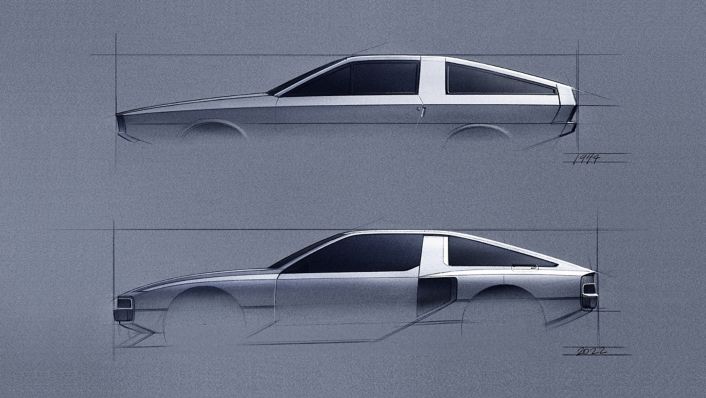
Determined to find out more, Hyundai’s designers dug a little more by following a paper trail, and were able to establish that this blueprint was the very first drawing handed over to the engineering team by the design team. They came to understand that the Pony Coupe concept was being developed with the potential of becoming a production car, and became very curious to learn more. They intensified their search for clues about the model to get to a more accurate account of the history behind it.
More facts emerged. The designers learned that while Hyundai was taking its first steps to develop the Pony, its original production model, founder Chung was of the firm belief that the company also needed to develop a sports car in order to become a player on the global automotive stage.
In an attempt to realise this vision, Chung ordered reverse engineering of the Pony Coupe concept to be undertaken. The company’s engineers measured, crafted and optimised a sports car version of the model. This even reached the advanced prototype stages, with several models built. Later on, further detailed blueprints were developed in order to create additional prototypes.
Ultimately, Chung’s dream of creating Korea’s first production sports car was thwarted by a series of factors, both external and internal.
Today, all that remains of Hyundai’s ‘70s sports car are some photographs of the prototypes and a few drawings from engineers.
The Pony Coupe Concept was a demonstration of Chung’s audacity and aspiration, and represented Hyundai’s boldness and willingness to take risks.
When I first saw this car, I couldn't help but think of our founder who dreamed of owning a car company. [It] depicts the pioneering philosophy, and the bold spirit of [Chung] that characterises Hyundai to this day.
While many generations of Hyundai engineers have delivered their own striking visions over the years. Today, Hyundai designers like SangYup Lee are committed to taking their work forward.
N Vision 74 design overview
For Hyundai’s designers, the company’s past serves as a compass to guide its future. Inspired by the 1974 Hyundai Pony Coupe concept and its never-to-be-produced sporty sibling, N Vision 74 is the latest example of their ambition. A dynamically-designed high-performance FCEV, it serves to redefine Hyundai’s relationship with its heritage and models that are yet to come.
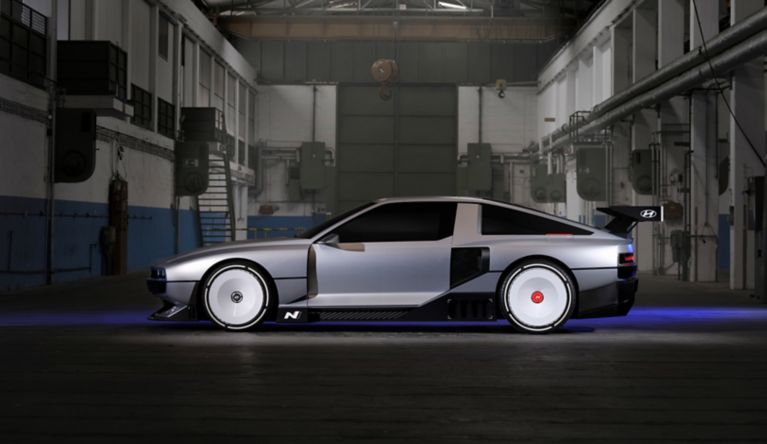
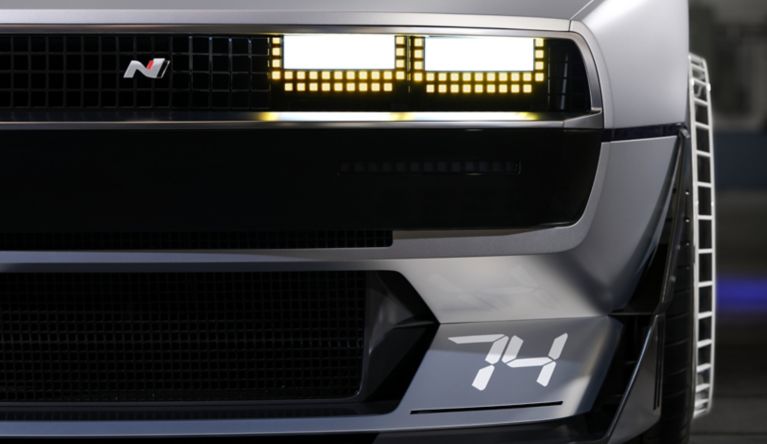
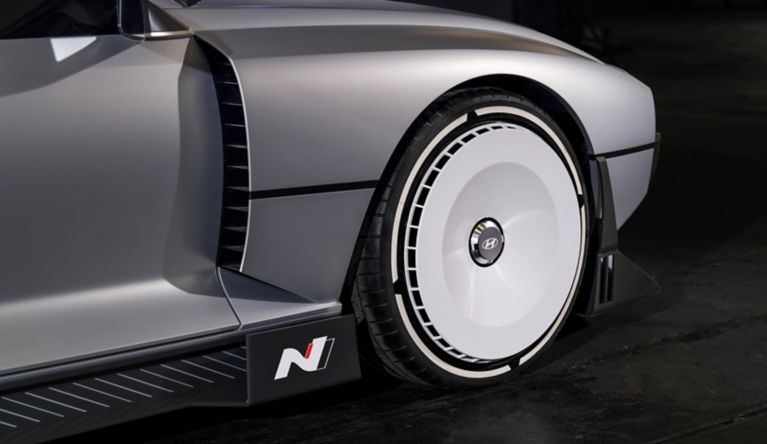
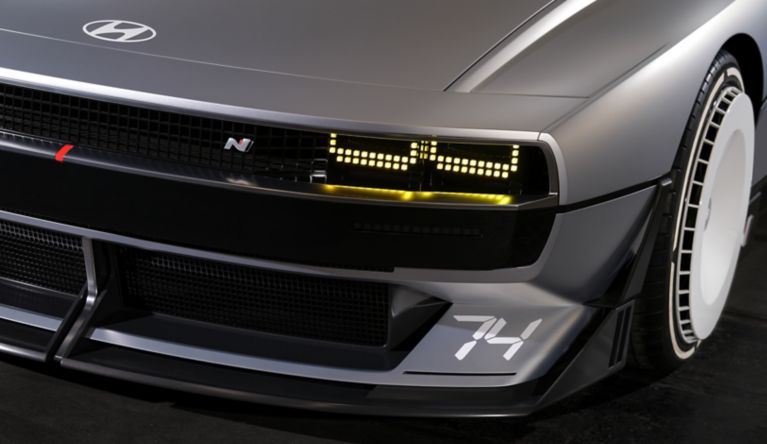
Inside, N Vision 74 provides a unique driving environment that blends heritage elements with a modern design and functional motorsport seating. The interior inherits the driver-centric cockpit of the Hyundai Pony Coupe concept, while Performance Blue-inspired details create a unique N specific interior feeling.
With N Vision 74, Hyundai's heritage meets the challenges of the era of electrification. Its high-performance sensibility is a milestone in Hyundai design, which contains a vision of a future that respects the past and offers an iconic sensibility.

